Day trip from Florence
San Marino is one of the smallest and oldest countries in the world. Some facts about the country –
- San Marino is the fifth-smallest country in the world with a land area of just over 61 square km(23 square miles).
- The country is completely surrounded by Italy.
- The whole country is basically Mount Titano with three imposing towers and a medieval village at the summit and small communities, farms and factories at the base.
- San Marino Historic Centre and Mount Titano are UNESCO World Heritage site since 2008. The flag of San Marino depicts the three towers of Monte Titano.
- San Marino is not part of the European Union although they use the euro as currency.
- Although the official language of San Marino is Italian, they are referred to as Sammarinese.
- Capital – City of San Marino
There are no direct trains to this country and no planes either. We rented a car for the day and drove to the city of San Marino which is about 250km east of Florence and it took us 3 hours to reach. Although we took our passports, there were no border checks.
- Parking in San Marino
- Porta San Francesco
- Church and Convent of Saint Francis
- Bartolomeo Borghesi Monument
- Piazza della Liberta
- Palazzo Pubblico
- Basilica di San Marino
- Guaita Tower
- Cesta Tower
- Montale Tower
Parking in San Marino – Here are a few options for parking your car :
- Parking within San Marino City itself is limited and challenging, especially during peak season.
- Many visitors opt to park in Borgo Maggiore and take the scenic cable car which will drop you close to the city center
- There are parking areas along the road leading up to Mount Titano. As we drove up the winding path towards the walls of the city, we were stopped by a traffic controller who was directing everyone towards a parking lot. After we parked the car and got out, we rode a couple of elevators (or climb some steps) that put us in front of the city entrance.
Porta San Francesco – Also knows as Porta del Piana, this is the main entrance to the walled city of San Marino. Porta San Francesco was originally built as a guard post in 1361. It was later enlarged and raised in 1451. The gate features a pointed arch, a bertesca (a defensive structure) with the coat of arms of the Republic, and plaques with defensive provisions.
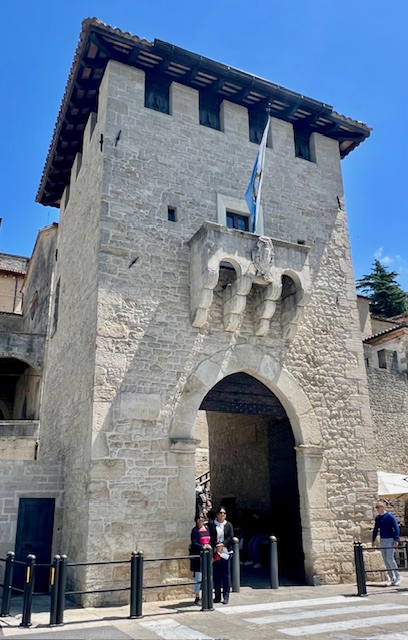
Church and Convent of Saint Francis – After you enter the city, and as you walk uphill along a winding path you will come across the St. Francis Church and Convent which was originally built in 1361. It was enlarged and reconstructed in the 17th-18th century. Inside the church, the wooden crucifix over the main altar dates from the 14th century and comes from the original church.
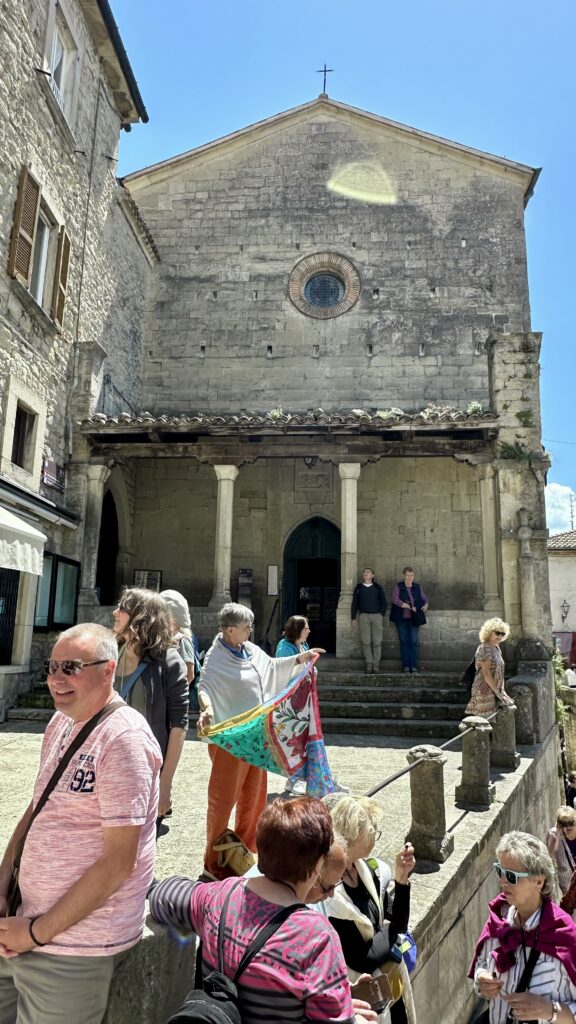
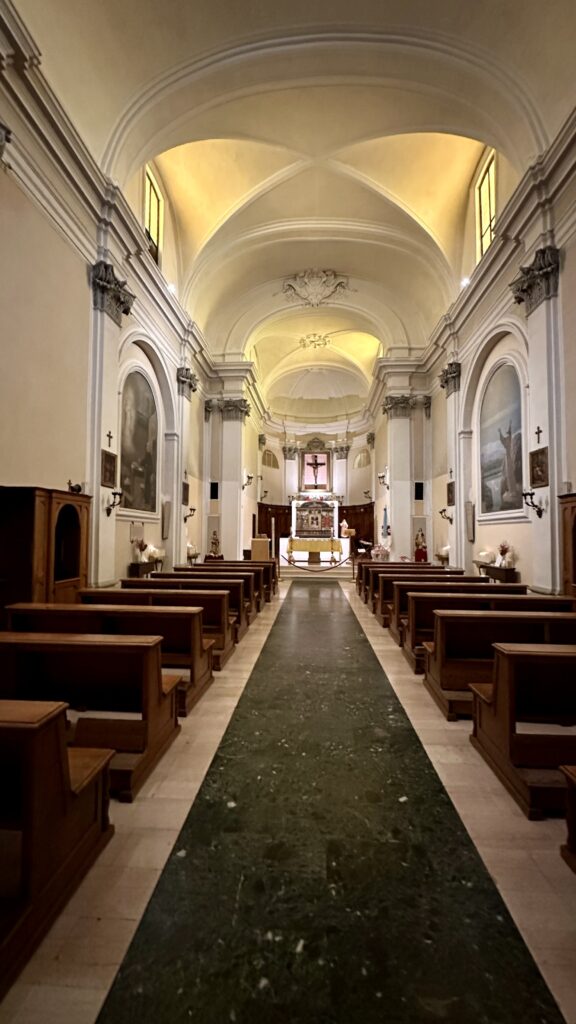
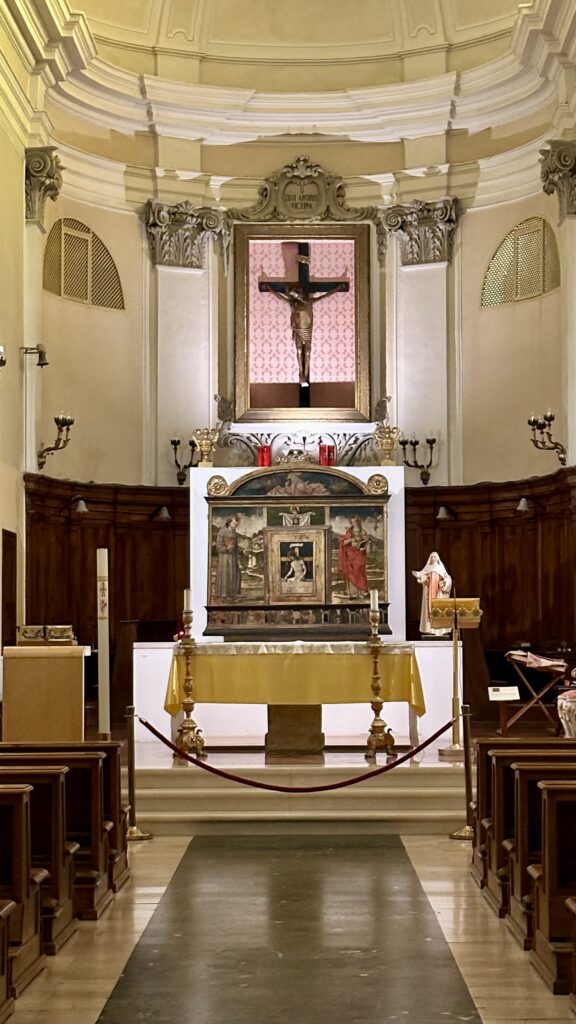
Bartolomeo Borghesi Monument – Walking further up towards the city center, you will reach a picturesque square from where you can get a wonderful view of the city and Adriatic Sea. This square is also the location of Cable Car drop off and pick up. The site has a statue of Bartolomeo Borghesi, who was a renowned Italian archaeologist and scholar.
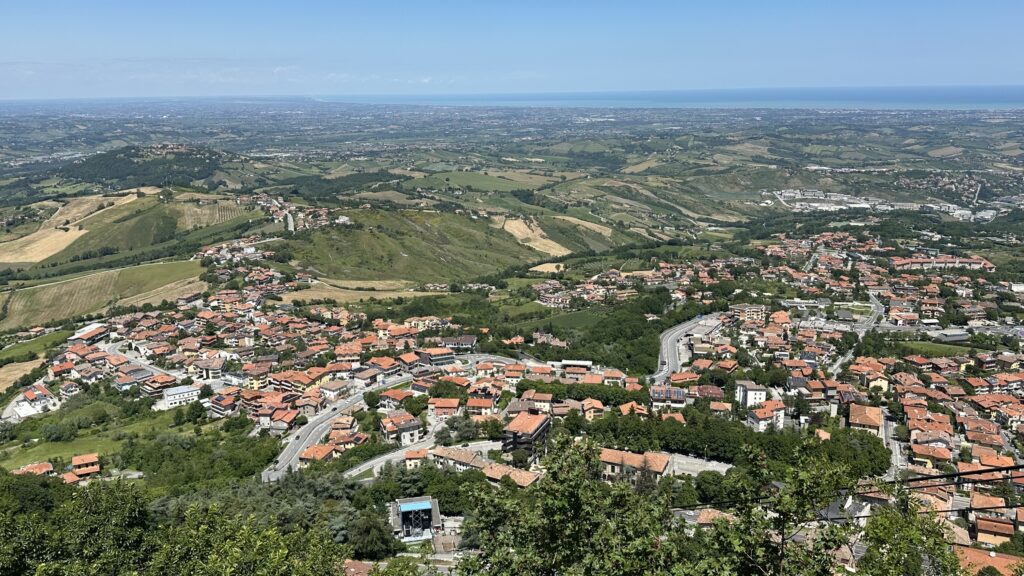
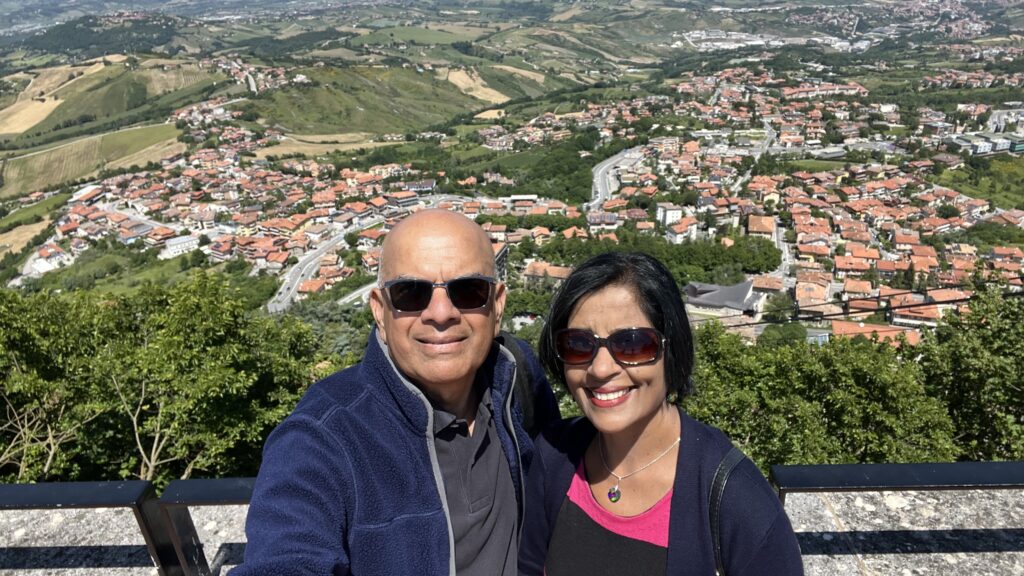
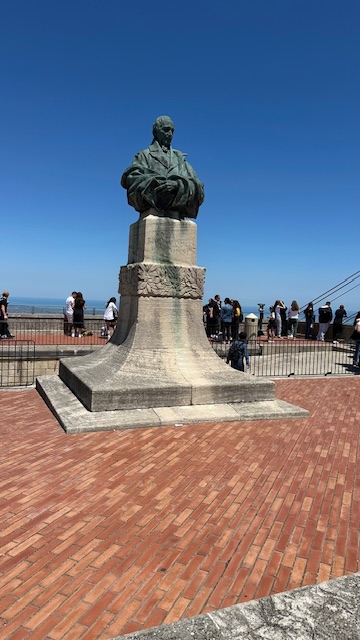
Piazza della Liberta – This plaza is considered the heart of the Republic of San Marino. It is a UNESCO World Heritage site and a prominent gathering place for locals and tourists. Buildings around the square include
- Palazzo Pubblico – town hall of the City of San Marino as well as its official Government Building
- Parva Domus – This building known as the ‘Small House of the Commune’ is a historic structure that once housed the post-offices of the region and was rebuilt in a 16th century style on the foundations of the former Parva Domus. Currently, the Parva Domus serves as the seat of the Secretariat of State for Internal Affairs. Visitors are generally not allowed access to the building.
- San Marino Statue of Liberty – In between the Palazzo Pubblico and Parva Domus is the majestic figure of the San Marino Statue of Liberty or Lady Liberty as she is respectfully known. She is fashioned from white Carrara marble and was donated by the Countess of Berlin in the 1800s as a symbol of freedom and independence.
- The Piazza offers breathtaking panoramic views of the surrounding countryside and the distant Adriatic Sea.
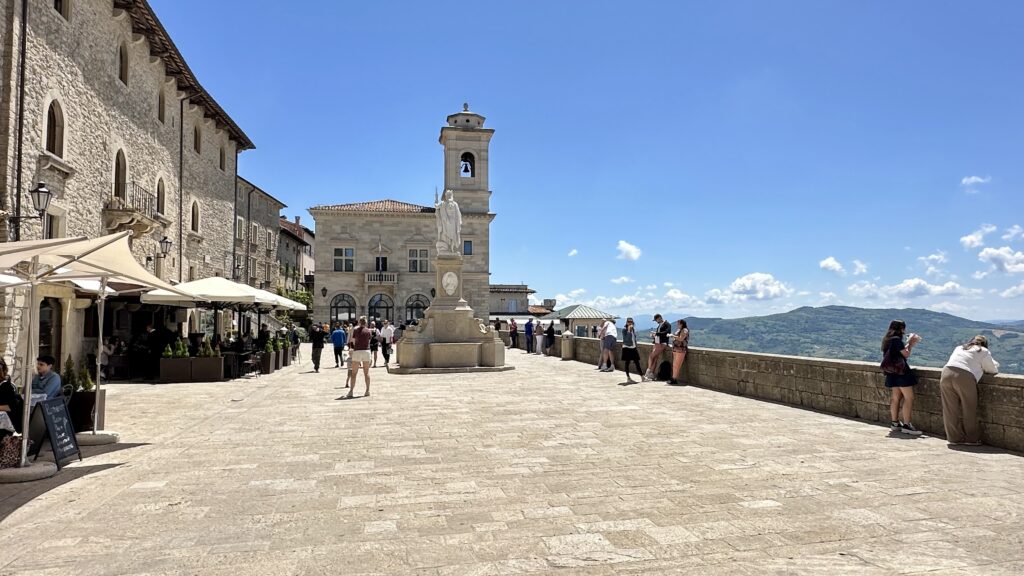
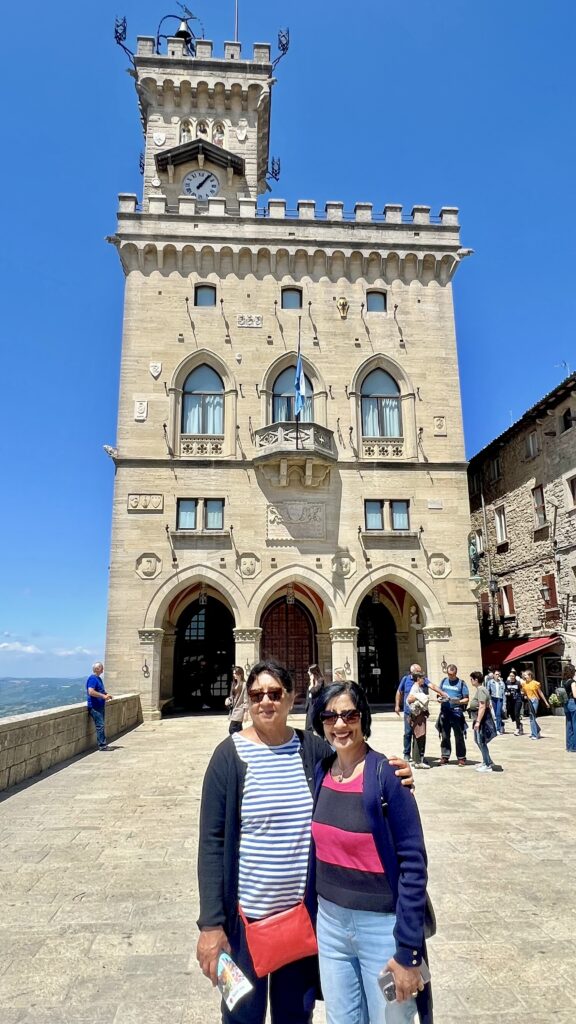
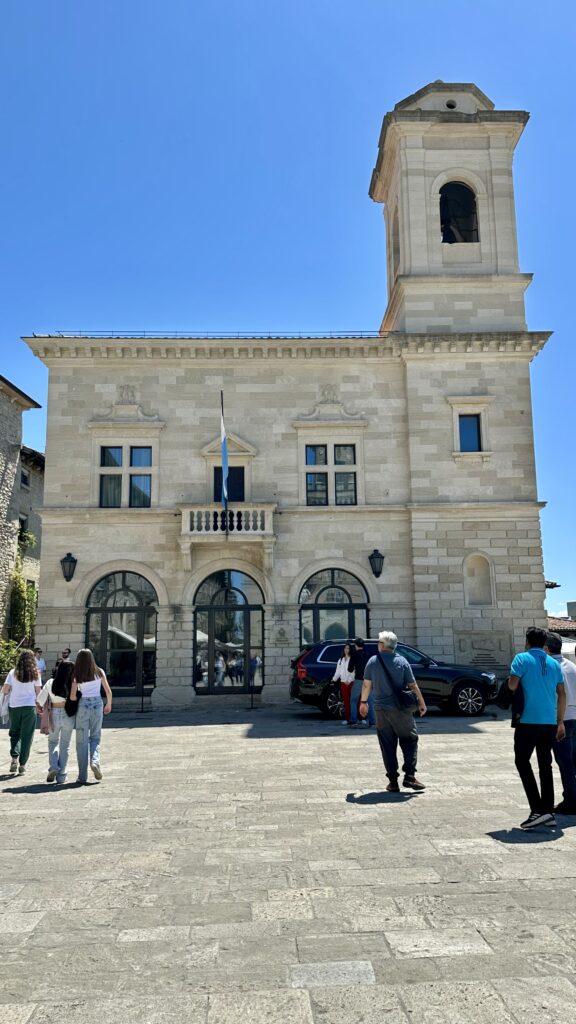
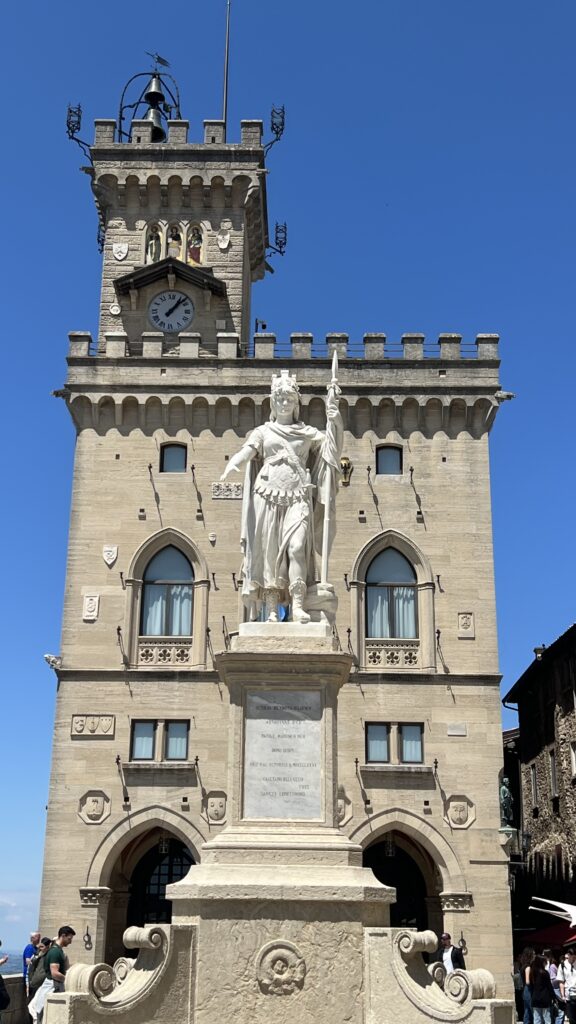
Palazzo Pubblico – Located in Piazza della Liberta, this neo-Gothic-style Government House (Palazzo Pubblico) with its square crenelated tower was designed by the architect Francesco Azzurri in the late 1800s and built of stone quarried on Mount Titano. The government house, which is also the Town Hall, was inaugurated in 1894. The facade is decorated with coats-of-arms of the Republic and its four municipalities.
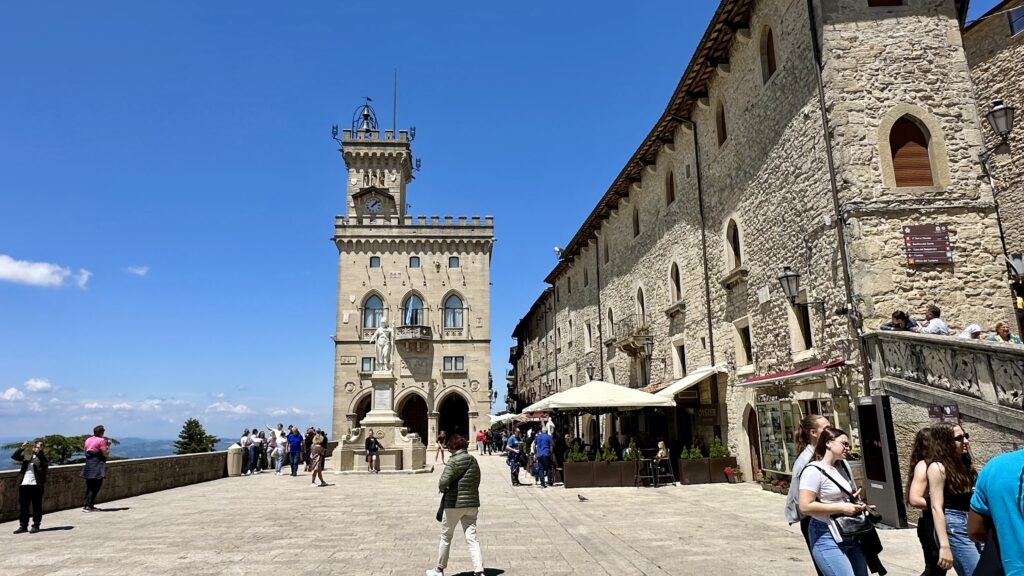
To see the interior of the government house, you have to buy tickets – €11. The ticket includes visits to the 2 towers and many museums around the city.
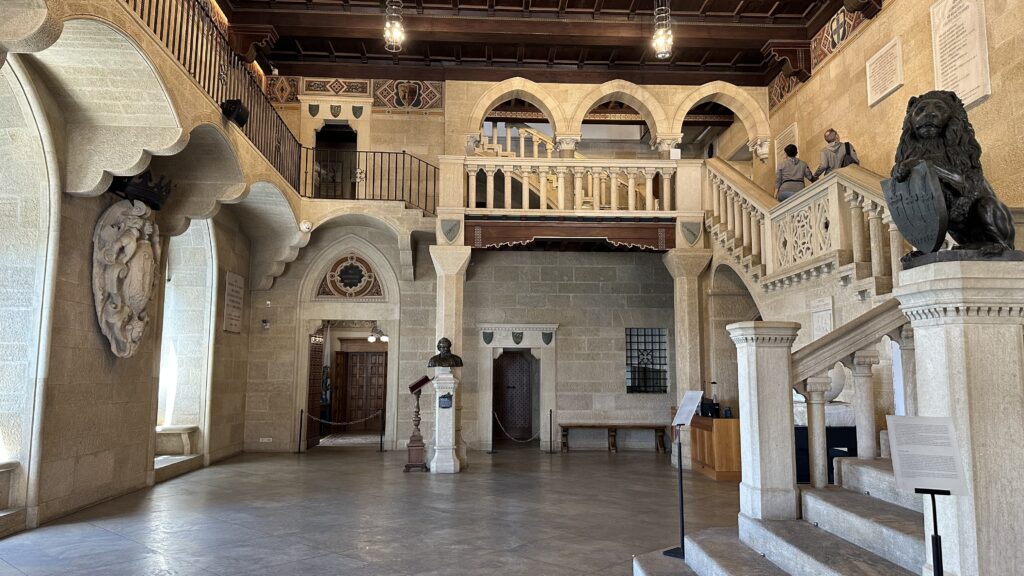
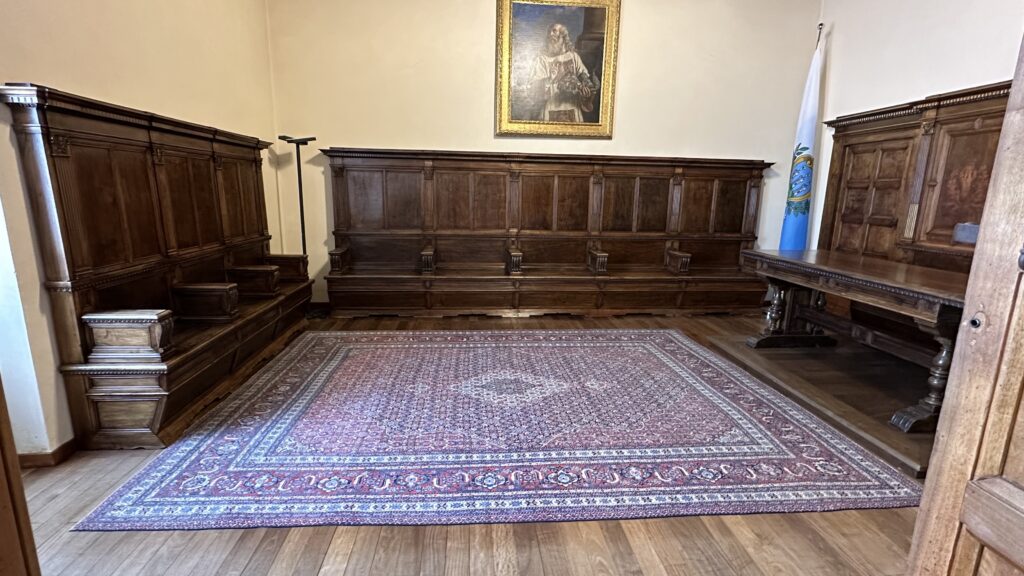
The Great and General Council room is intended for carrying out the parliamentary activity of the Republic. The centre of the room has tables and seats, presumably for the senior members of the council and is surrounded by benches for the representatives.
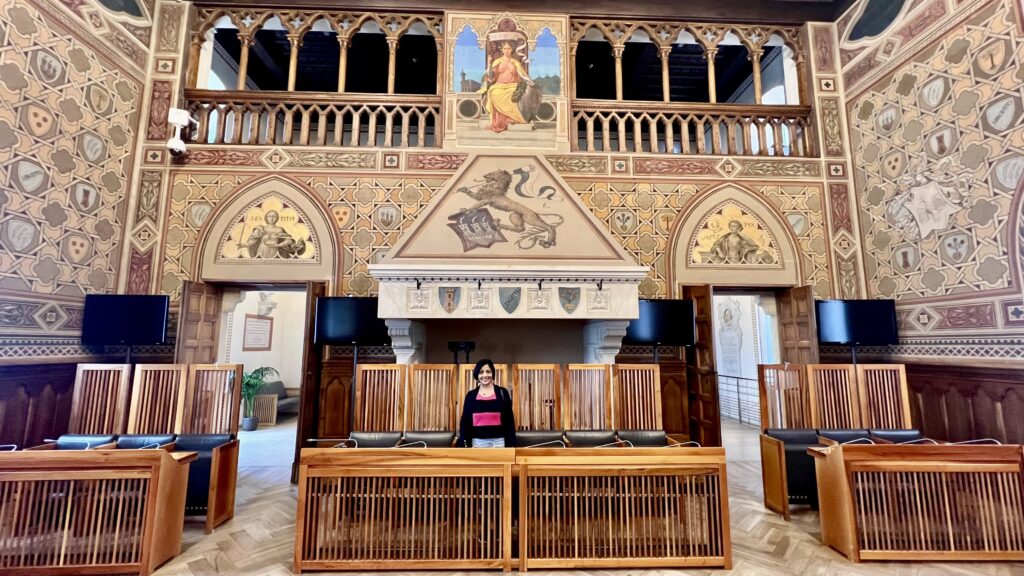
The front wall is dominated by a painting done by Emilio Retrosi in 1894. It depicts the apparition of Saint Marino in front of his people. The Saint is portrayed in the act of leaving his people his heritage of freedom and independence. The scene takes place at the foot of Mount Titano. To the right of the saint are two captains regent, while to the left are the people with the banners of the guilds.
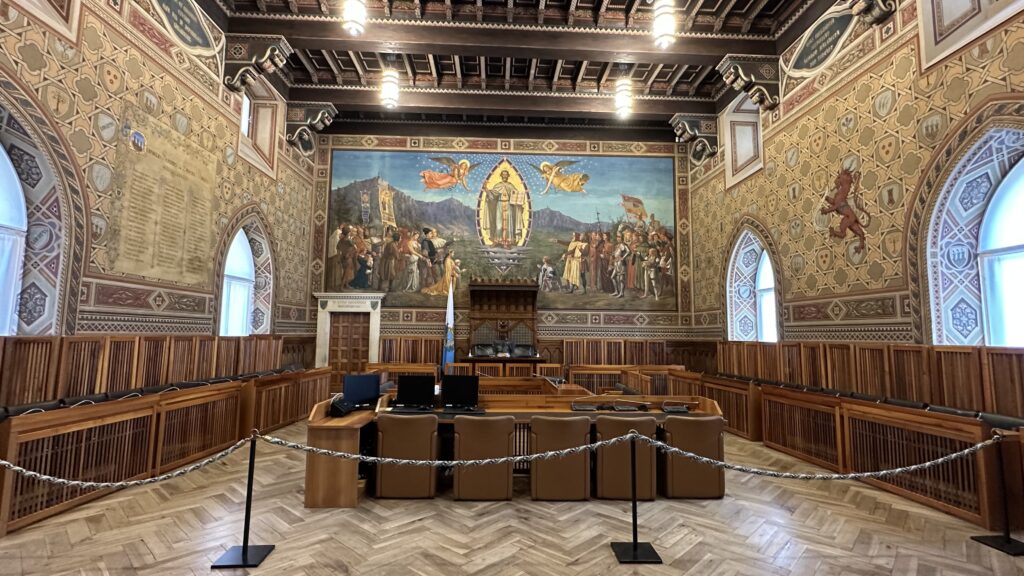
Basilica di San Marino – After checking out the parliament interior we started our uphill trek towards the towers of San Marino. On the way we stopped at the Basilica di San Marino. This Catholic church is the main church of the City of San Marino and is located on Piazzale Domus Plebis. The present church was built in 1836 in place of an earlier one that dated to 7th century. It is built in the Neoclassical style, with a porch of 8 Corinthian columns.
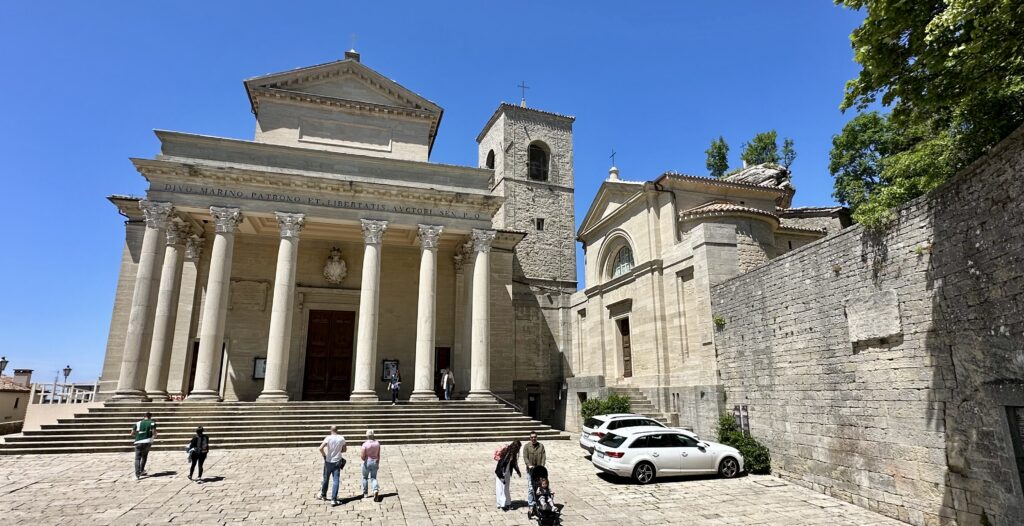
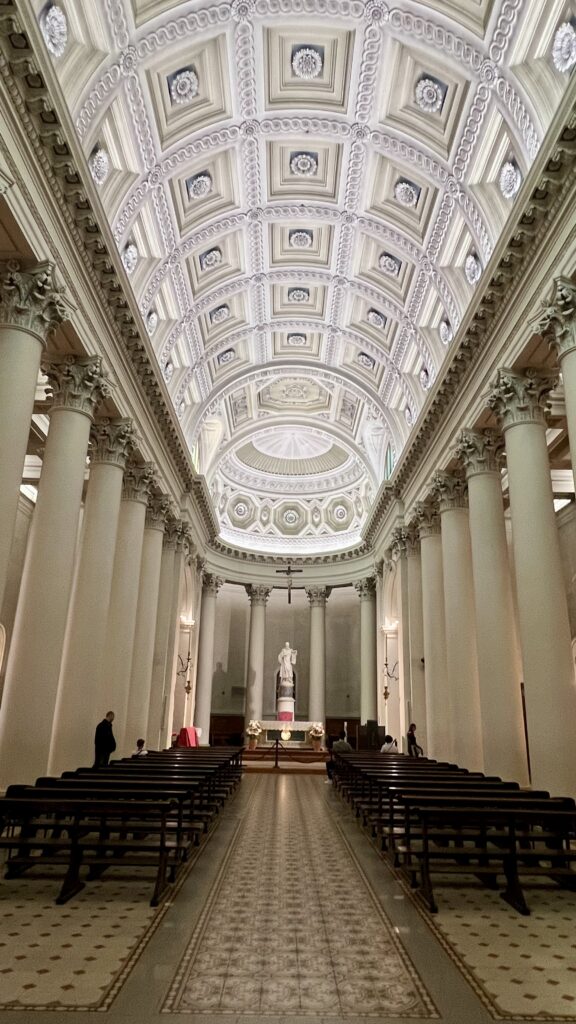
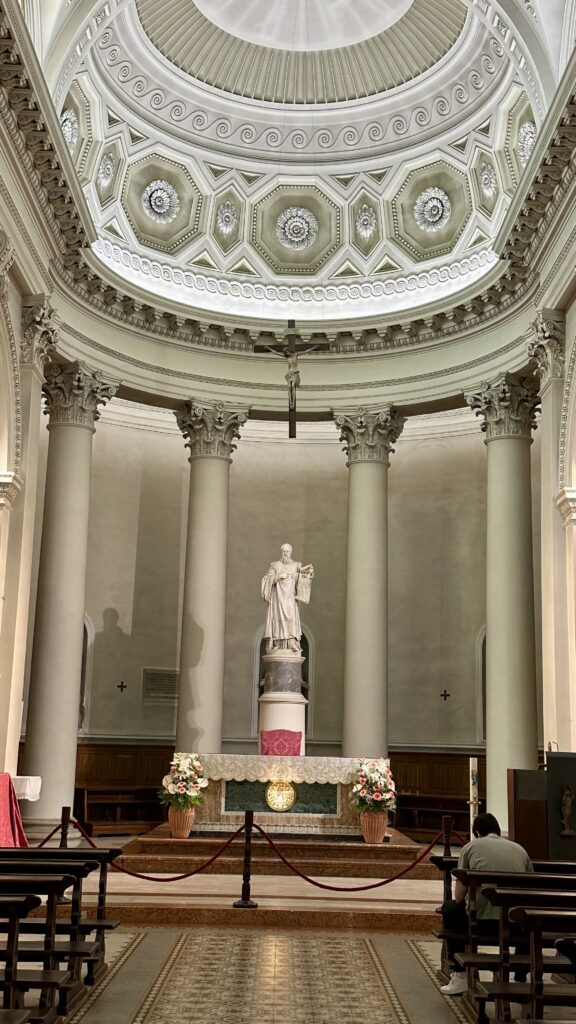
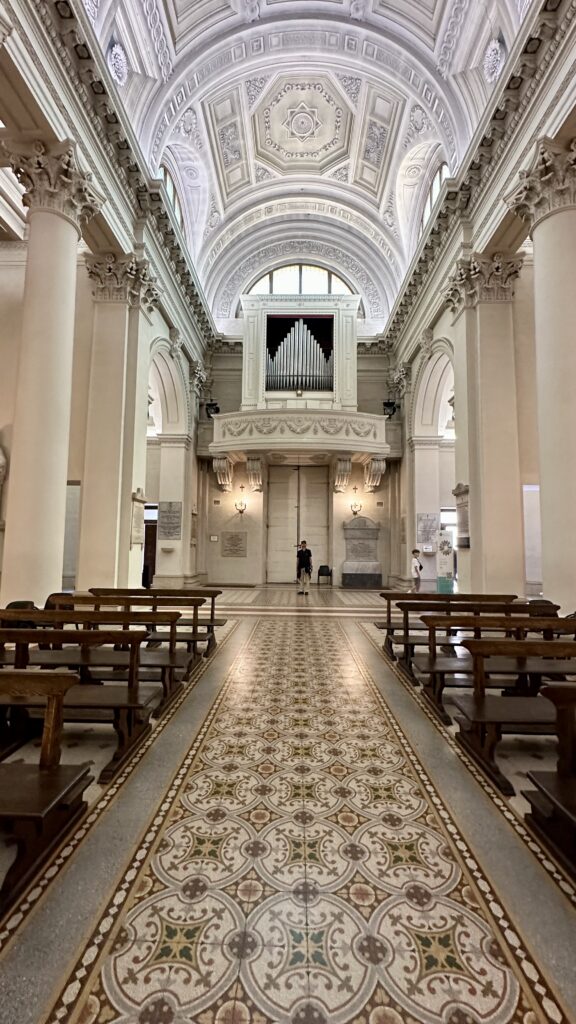
Guaita Tower – After visiting the church, we continued our trek towards the first tower, the Guaita Tower. It was a bit of an upward climb and took us about 15 minutes to reach the oldest and grandest of the three towers. Built during the 11th century, it served for some time as a prison and was rebuilt severaly times for different purposes until it reached the form we see today. To get to the very top, there is a steep “staircase” – which is more like a ladder.
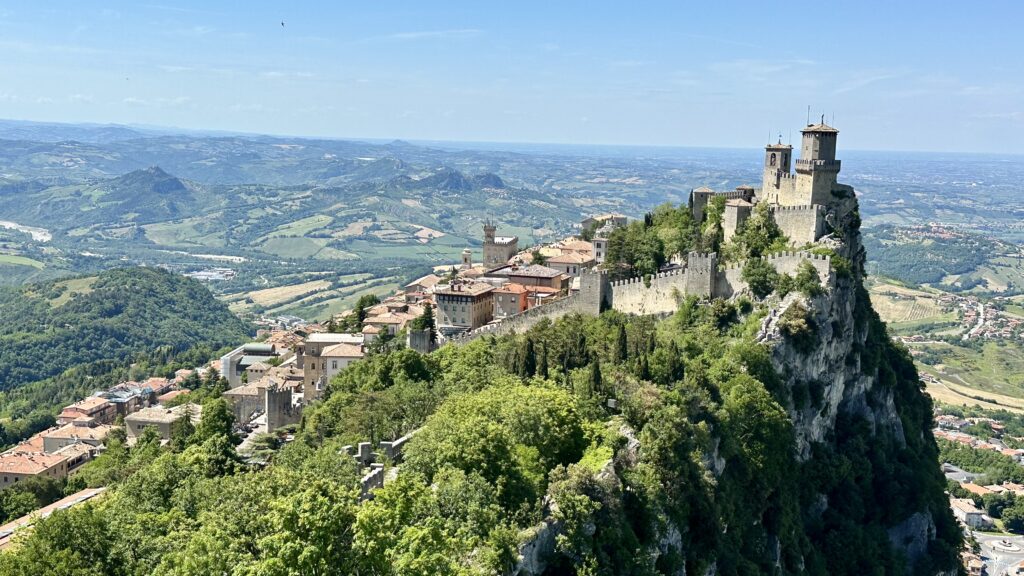
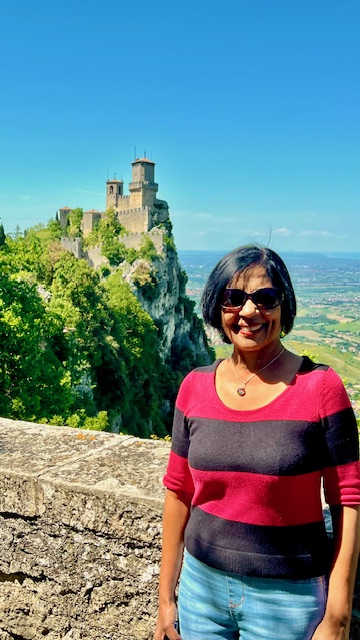
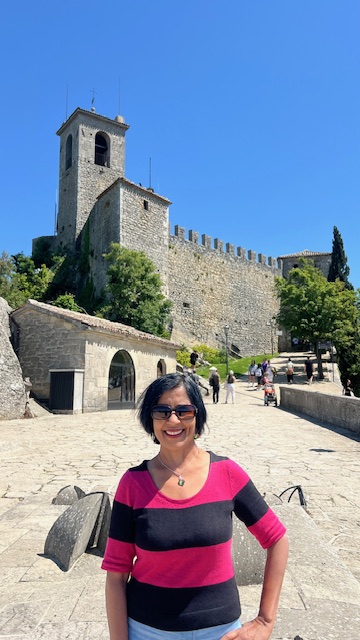
Inside the Guaita Tower – You can explore the rooms, passages, ramparts, views of San Marino’s landscapes, and the Adriatic Sea.
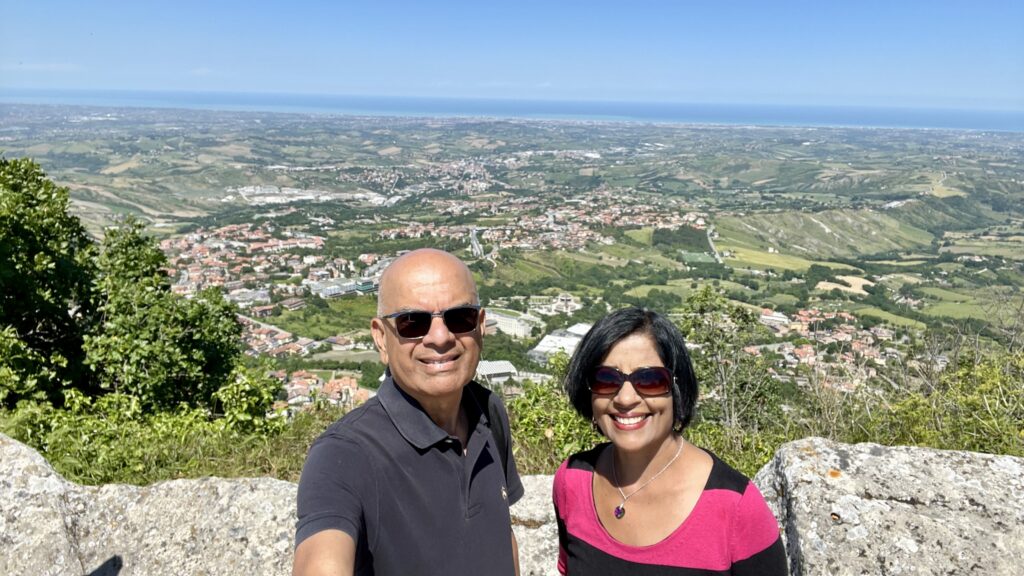
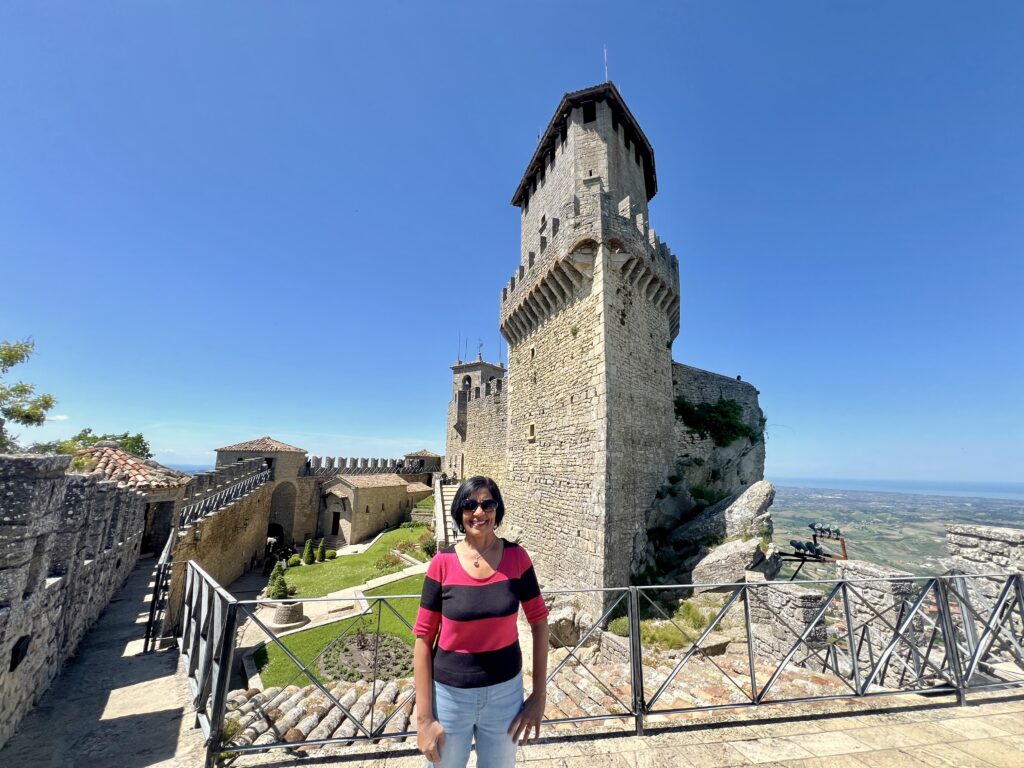
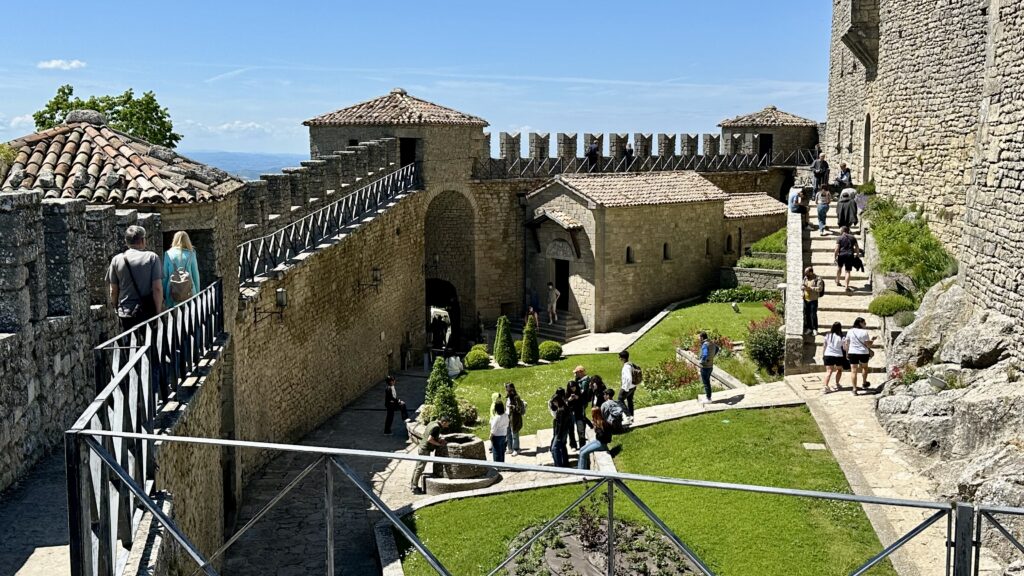
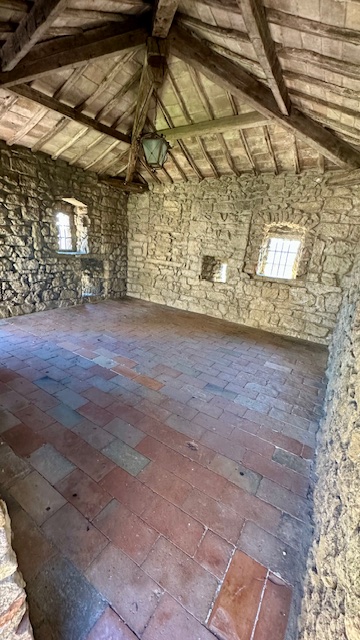
Cesta Tower – After exploring the first tower, we trekked to the 2nd tower which was another 10-15 minute walk. The Cesta Tower is on the highest peak of Monte Titano.
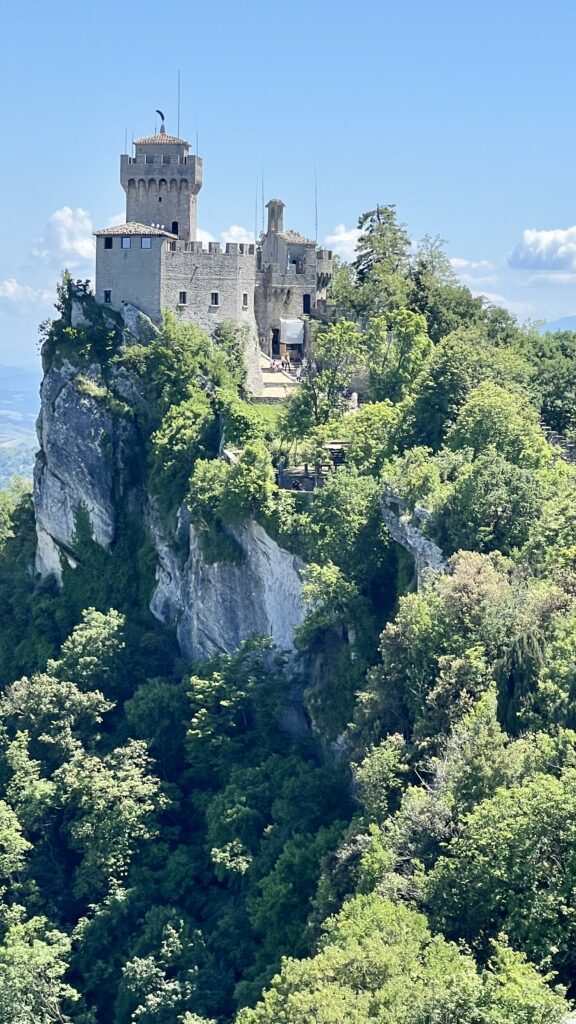
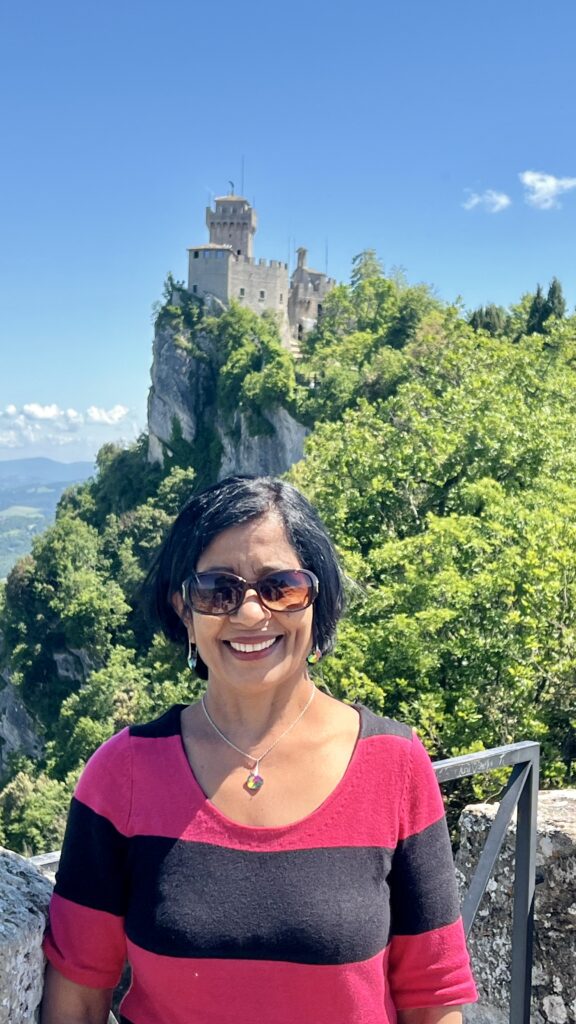
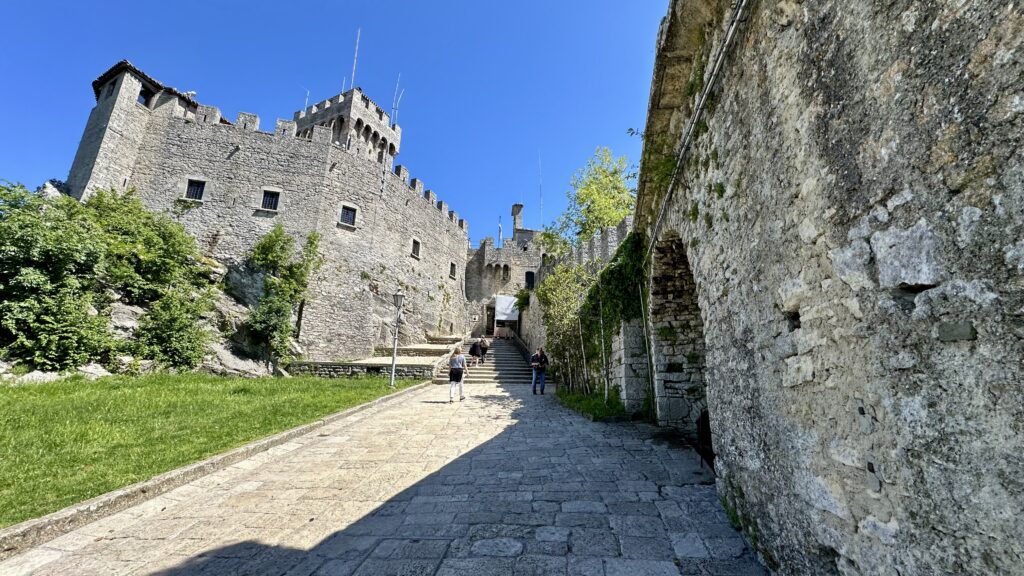
Inside the Cesta Tower – There is a museum inside displaying an impressive collection of weapons. The weapons date back to medieval times and continue to the present day. This museum also showcases how San Marino stood through wars, and cultural impacts, and yet still maintained its independence.
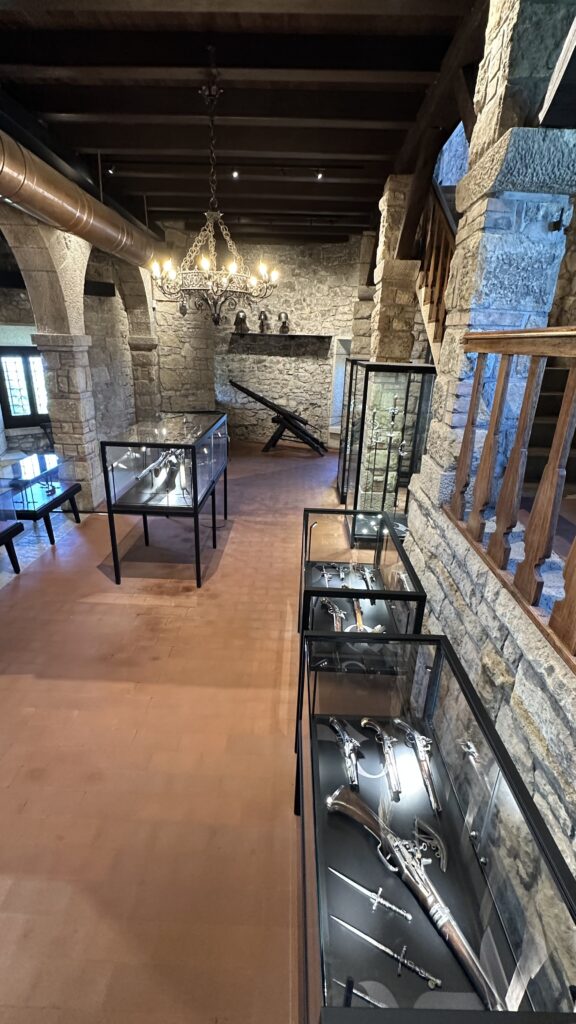
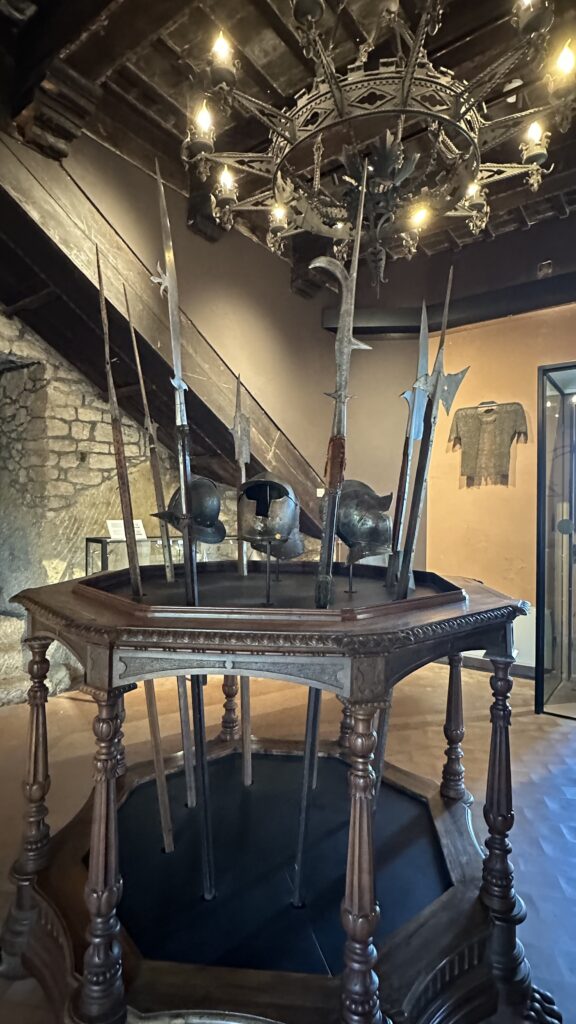
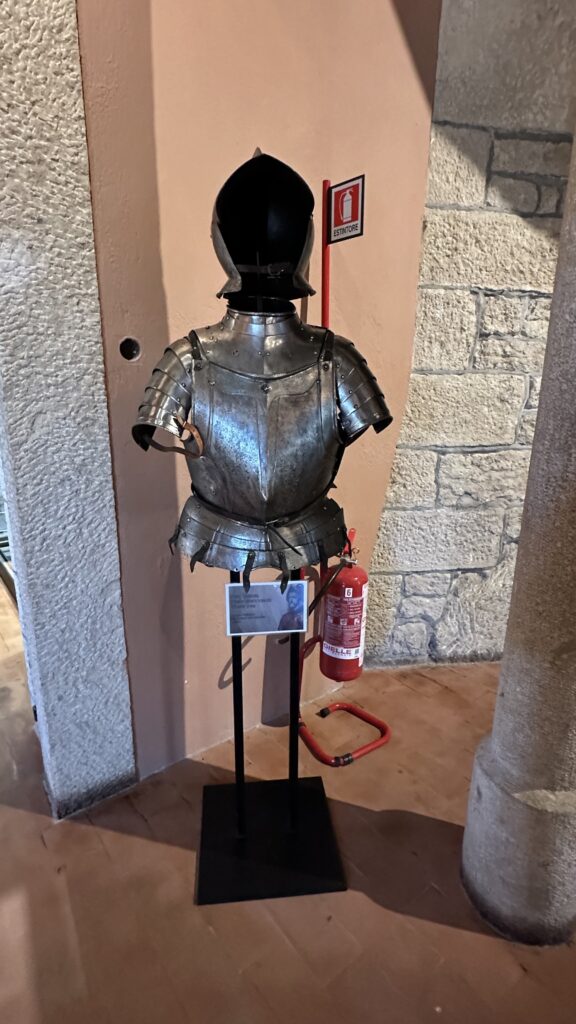
After climbing to the top of the tower, you get a wonderful view of the surrounding landscape.
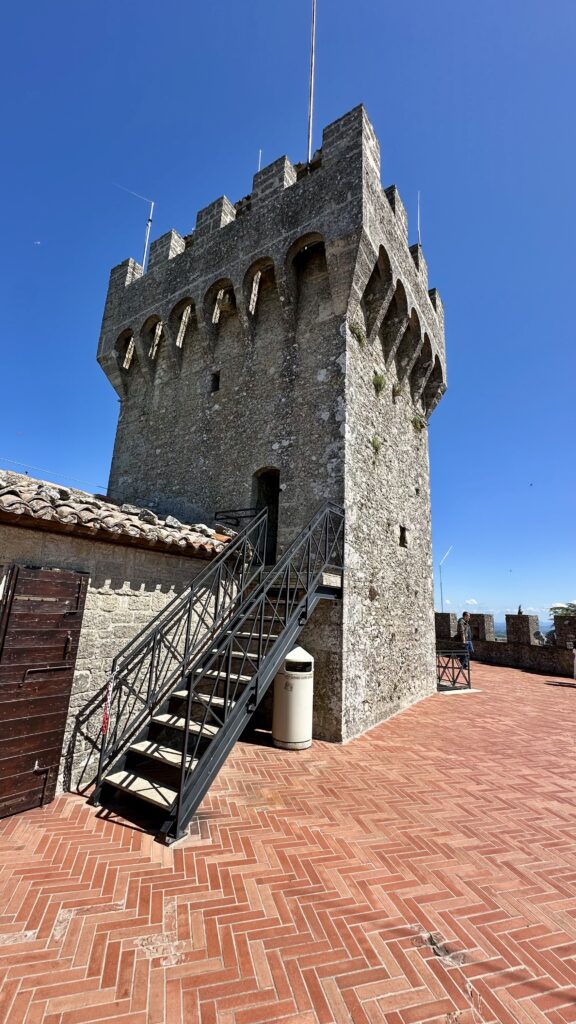
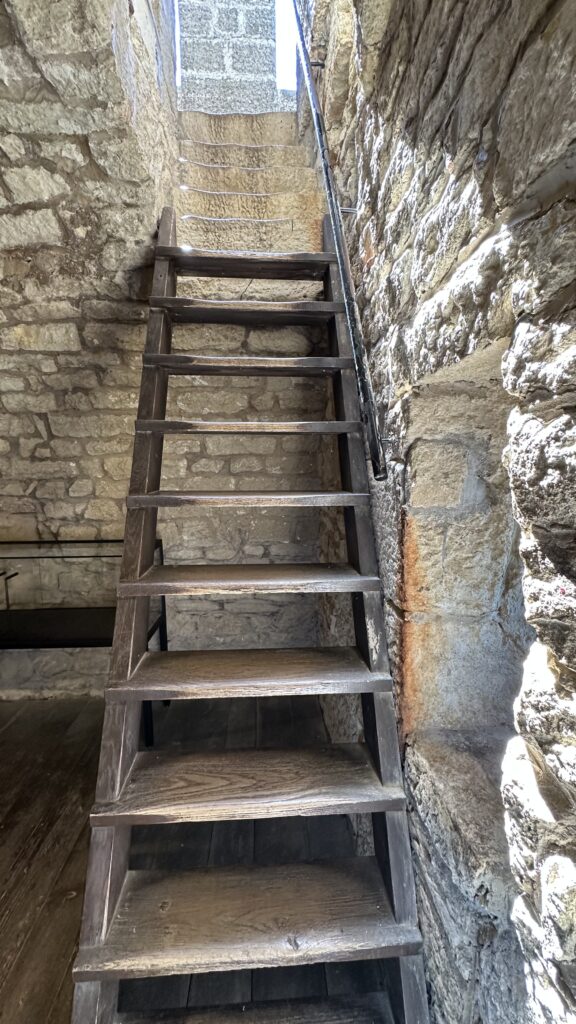
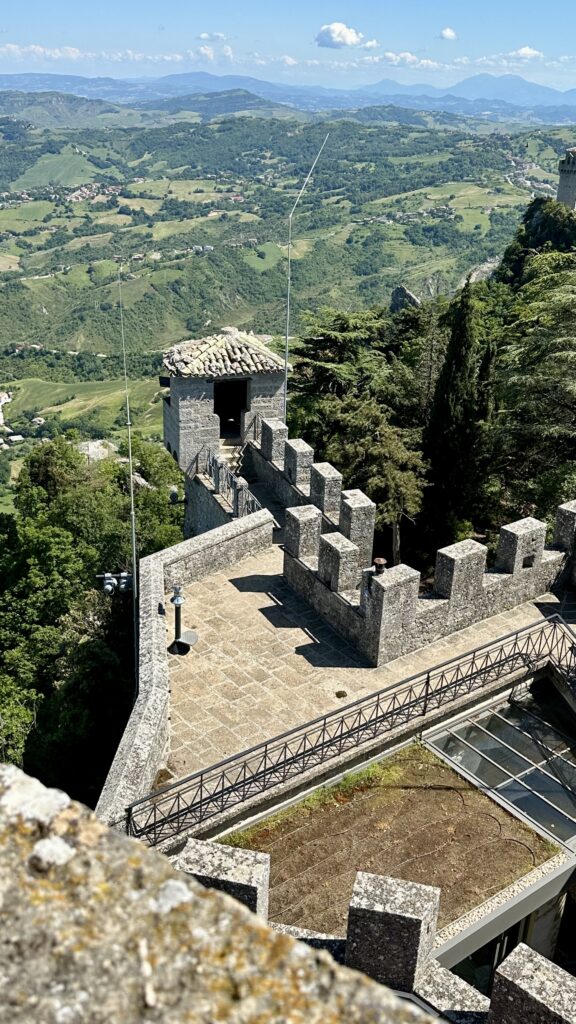
Montale Tower – This is the third and the smallest of the three peaks of Monte Titano. The Tower was constructed in 1278, marking it as the youngest of San Marino’s three iconic fortifications on Monte Titano. The tower primarily served as both a strategic watchtower and a prison. Its construction was a direct response to growing threats from the powerful Malatesta family of Rimini, who had territorial ambitions toward the small republic.
Together with the Guaita and Cesta towers, the Montale formed a formidable triangular defensive system that helped preserve San Marino’s independence through centuries of Italian political turbulence. The Montale underwent significant renovation in 1935, during which the tower and surrounding areas were carefully restored to preserve their historical integrity. Unlike its counterpart towers, the Montale has never been opened to the public, maintaining its mysterious character and historical authenticity. Despite this limited access, the tower remains an essential component of San Marino’s cultural heritage and national identity.
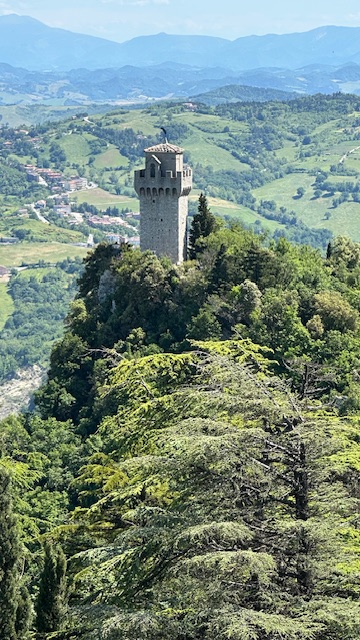
San Marino Museums – There are many museums which are included in the €11 ticket that you buy at the Government house – State Museum, Coin and Stamp Museum, Museum of Curiosities etc. We did not have time to visit any of the museums.
The whole site seeing including sit-down lunch took us about 4 hours. By the time we finished exploring the towers it was 4pm and since we had to return our car by 7:30pm, we did not have time to visit any of the museums.